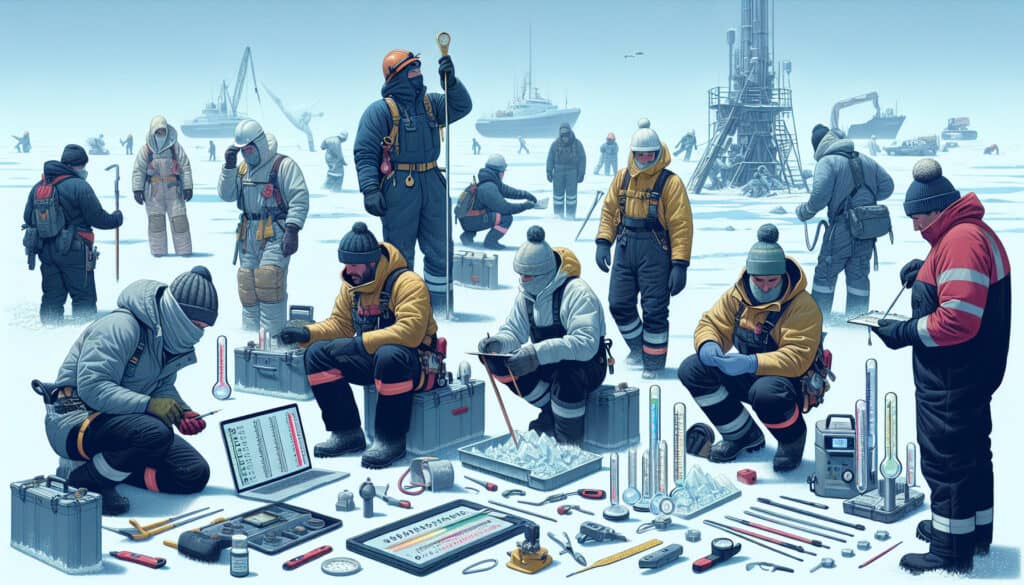Tools and guidelines used to assess the risk of cold-related injuries and illnesses in the workplace.
- Metodologie: Lean Sigma, Produzione
Cold Stress Indices

Cold Stress Indices
- Ingegneria Ambientale, Impatto ambientale, Ergonomia, Scienze della salute, Fattori umani, Analisi del rischio, Sicurezza, Pratiche di sostenibilità
Obiettivo:
Come si usa:
- These indices, such as the Wind Chill Index or the Insulated Clothing (ICL) model, combine environmental factors like temperature and wind speed to provide a single value that represents the thermal challenge to a worker.
Professionisti
- Provide a standardized way to assess cold-related risks, help in selecting appropriate protective clothing, and guide the implementation of safe work practices.
Contro
- Can be complex to calculate, may not account for all individual factors (e.g., health status), and are guidelines that require professional judgment to apply correctly.
Categorie:
- Ergonomia, Risorse umane, Gestione del rischio
Ideale per:
- Assessing the level of risk to workers in cold environments to prevent cold-related health issues.
Cold Stress Indices, such as the Wind Chill Index and the Insulated Clothing (ICL) model, serve as invaluable tools in various industries, particularly those involving outdoor work or environments with extreme temperatures, such as construction, agriculture, and winter sports management. These indices not only quantify the risks posed by cold exposure but also integrate specific environmental conditions, making them indispensable during the risk assessment phase of safety planning. Initiated by safety officers, health professionals, or environmental engineers, the application of these indices involves collaboration among workers, occupational safety experts, and management to accurately gauge the thermal stress on personnel. In sectors like emergency response and military operations, real-time use of these indices can inform decisions on shifting tasks or altering schedules to minimize exposure. The benefits include providing a consistent framework for evaluating cold-related hazards, enhancing the selection process for suitable protective clothing to ensure optimal warmth and mobility, and establishing best practices for work procedures tailored to varying temperatures and conditions. Training sessions based on these indices can promote awareness among workers regarding cold stress, further aiding in the adoption of preventive measures. Their implementation can significantly reduce the incidence of cold-related illnesses, thereby improving workplace safety and efficiency.
Fasi chiave di questa metodologia
- Select appropriate cold stress index based on the specific conditions, such as the Wind Chill Index for wind-chilled environments or the Insulated Clothing model for assessing clothing effectiveness.
- Determine temperature and wind speed values pertinent to the working environment.
- Input these environmental parameters into the chosen cold stress index calculation model.
- Obtain the cold stress index value to assess the thermal challenge present.
- Compare the generated index value against established risk thresholds or guidelines.
- Evaluate the adequacy of existing protective clothing in light of the index results.
- Implement modifications to work practices or enhance protective measures based on the assessment outcomes.
Suggerimenti per i professionisti
- Utilize local meteorological data to calibrate indices for specific environments, ensuring the Wind Chill Index and ICL model accurately reflect local conditions.
- Incorporate individual worker characteristics, such as metabolic rate and clothing insulation, to customize risk assessments beyond generic models.
- Regularly review and update protocols based on advances in cold stress research, integrating new findings to enhance worker safety measures.
Leggere e confrontare diverse metodologie, raccomandiamo il
> Ampio archivio di metodologie <
insieme ad altre 400 metodologie.
I vostri commenti su questa metodologia o ulteriori informazioni sono benvenuti su sezione commenti qui sotto ↓ , così come tutte le idee o i link relativi all'ingegneria.
Contesto storico
1990
1990
1992
1994
1997
1999-05-01
2000
1990
1990
1990
1992
1996
1998
2000
2000
(se la data non è nota o non è rilevante, ad esempio "meccanica dei fluidi", viene fornita una stima approssimativa della sua notevole comparsa)















Post correlati
Programma di produzione principale (MPS)
Personalizzazione di massa
Imbuto di marketing
Audit di marketing
Indice MAPO (Movimento e assistenza dei pazienti in ospedale)
Pianificazione delle risorse di produzione (MRP II)